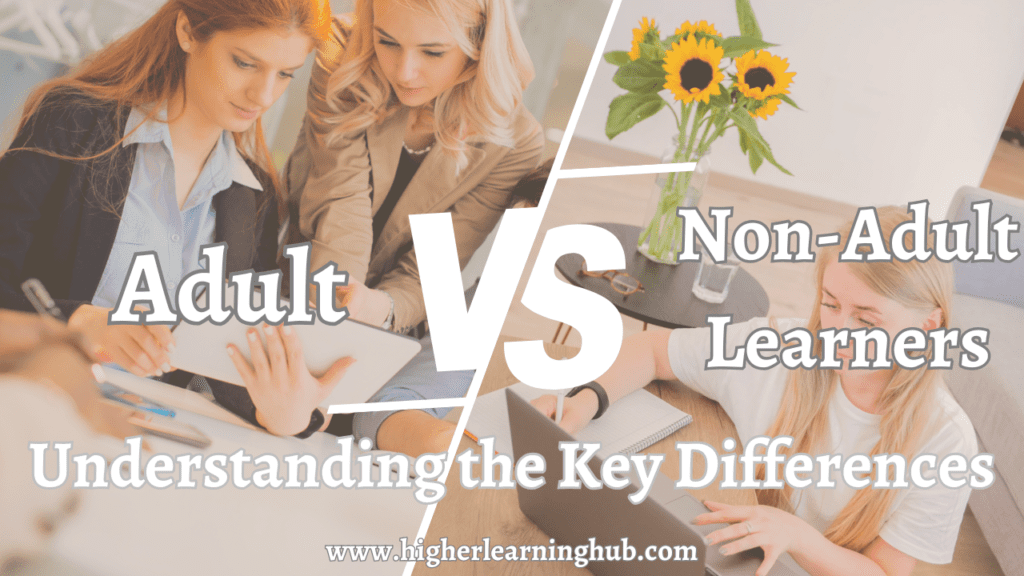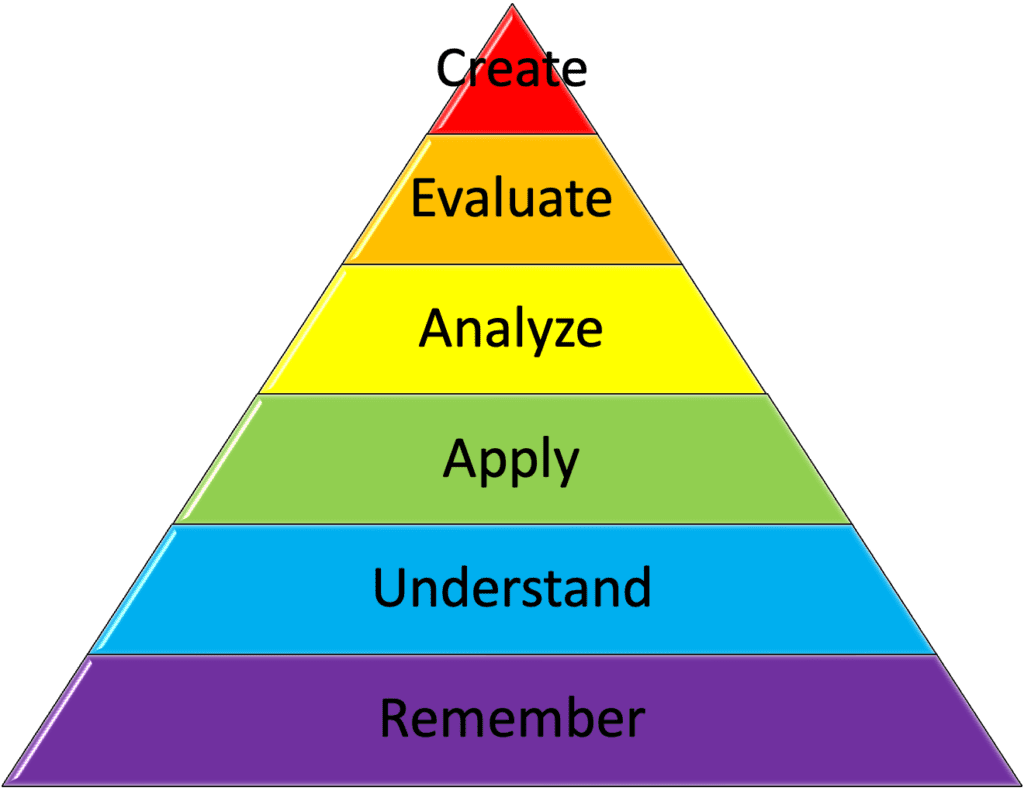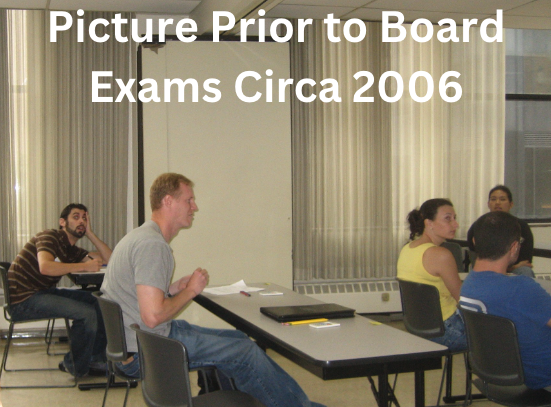Authored by Dr. Leland Jaffe; Associate Dean and Professor; Published on November 8th, 2024
The differences between adult learners and younger learners aren’t just about age; they reflect unique motivations, experiences, and learning styles.
Adult learners bring a wealth of real-world experiences and intrinsic motivation that can drive them to succeed. They often seek education to fulfill specific personal or professional goals, making them potentially more invested in the learning process.
In contrast, younger learners are typically navigating a structured educational path driven by external expectations. Understanding these distinct needs is important for us as educators. It shapes teaching strategies and ultimately influences educational outcomes. Exploring these differences helps tailor educational approaches, enhancing learning for all ages. Recognizing these variations is important to support both groups effectively, optimizing educational experiences to fit their unique needs.
Defining Adult Learners


Adult learners typically have different needs and characteristics compared to younger learners. They bring a wealth of experiences and skills to the learning environment. Understanding these traits is important in designing effective educational experiences.
Characteristics of Adult Learners
Adult learners come with a set of distinct characteristics:
- Motivation: Adults often have specific goals and purposes for learning. Whether it’s pursuing a specific career, changing fields, or personal growth, their motivation is generally high, driving them to succeed.
- Self-Direction: Many adult learners prefer to take control of their learning journey. They appreciate having input into what and how they learn, often setting their own goals and finding resources independently – many have already developed the skill of being a self-directed learner.
- Life Experiences: Adult learners bring diverse experiences that can enrich the classroom. These experiences can provide context to new learning material, making it more relevant and engaging.
- Intrinsic Learning: Unlike younger learners who might be motivated by grades, adults are typically motivated by an internal desire to learn and understand/apply the material.
For a more detailed understanding of adult learning characteristics, you can refer to this research.
Common Learning Environments for Adults
Adult learners find themselves in various educational settings:
- Workplaces: Many adults engage in learning through professional development programs. Whether through workshops, seminars, or courses, learning in the workplace is often aimed at skill enhancement.
- Community Colleges: These institutions often offer flexible schedules and courses tailored for adult students, making them an accessible choice for continued education or new skill acquisition.
- Online Platforms: The rise of technology has opened up opportunities for learning online. These types of platforms can be helpful for adult learners acquiring education while also participating in the workforce.
Understanding these environments helps recognize the diversity of options available to adult learners and the flexibility these offer in accommodating their unique needs. Each environment provides unique benefits, allowing adults to learn in ways that align with their lifestyles and objectives.
Defining Non-Adult Learners
Non-adult learners typically refer to children and adolescents who are still in the foundational stages of their education (elementary, middle, and high school). These learners are primarily dependent on external guidance and structured environments to facilitate their learning processes. Unlike adult learners who may seek education for career advancement or personal growth, non-adult learners focus on absorbing fundamental skills essential for their academic and social development.
Key Characteristics of Non-Adult Learners


Non-adult learners exhibit distinct characteristics that shape their educational journey. These characteristics include:
- Dependency on Teachers: Non-adult learners often rely heavily on teachers for direction and motivation. Teachers act as guides who provide the necessary structure and support.
- Structured Learning: Young learners thrive in environments where learning is systematic and organized. They require clear instructions, set routines, and a predictable schedule to stay focused and engaged.
- Formative Assessments: Regular assessments help measure progress and identify areas for improvement. These assessments function like checkpoints, ensuring learners are on the right path and helping adjust strategies as needed. See the blog post on formative assessments.
Non-adult learners’ reliance on these characteristics highlights the importance of a well-organized educational framework for their growth and success. For more insights on these learning traits, you can explore youth learning characteristics.
Traditional Learning Environments for Non-Adults
Elementary, middle, and high schools represent the traditional learning environments for non-adult learners. These institutions are designed to cater to the needs of younger students through structured curricula that blend academic and extracurricular activities.
- Schools: From elementary to high school, these institutions provide the basic educational foundation. Classrooms are structured to encourage interaction and learning.
- Structured Curricula: The curricula are tailored to meet developmental milestones, ensuring students acquire essential knowledge and skills.
These environments play a critical role in shaping non-adult learners’ educational experiences by providing the stability and predictability they need to flourish academically and socially.
Learning Styles and Preferences
Understanding learning styles is key to effectively teaching both adults and children. As we delve into the preferred methods of learning among these two groups, we can see some interesting differences.
Preferred Learning Methods for Adults
Adults often thrive in learning environments that are practical and relevant to their lives. Here are some techniques that stand out for adult learners:
- Experiential Learning: Adults tend to engage more when they can relate the learning to real-world experiences. Learning by doing, such as through hands-on activities or simulations, helps them grasp complex concepts. A comprehensive guide on effective teaching methods for adults underscores the importance of this approach.
- Collaborative Approaches: Group work and discussions help adults exchange ideas and learn from peers. This method also nurtures social interactions, which can further enhance understanding and retention. For more information, you can explore collaborative learning strategies.
- Problem-Solving Strategies: Tacking issues head-on appeals to adult learners, who benefit from honing their critical thinking skills. By addressing real-life problems, adults can directly apply what they learn, facilitating deeper comprehension.
Learning Preferences of Non-Adult Learners
Children have unique learning preferences, shaped by their stage of cognitive development:
- Guided Instruction: Unlike adults, children often need more structured learning environments. Teachers and educators play a pivotal role in guiding their learning journeys. This structured guidance helps them understand abstracts through clear, concise instruction. According to this insightful article, acknowledging a child’s learning style is crucial for effective education.
- Repetition: Reinforcement through repetition helps young learners memorize new information. Whether it’s through songs, rhymes, or repeated exercises, this method strengthens their cognitive pathways.
- Play-Based Learning: Engaging in play is not just fun for kids; it’s a powerful learning tool. Through play-based activities, children can develop social and motor skills while also exploring and understanding the world around them. Learn more about how play-based learning supports development.
These differing learning styles between adults and children highlight the need for tailored educational approaches to meet each group’s distinct needs. By understanding and implementing suitable methods, educators can significantly enhance learning outcomes for all ages.
Barriers to Learning
Both adult and non-adult learners face unique obstacles that can hinder their educational journey. While adult learners wrestle with balancing responsibilities, non-adult learners deal with issues related to focus and motivation. Let’s explore these barriers and understand how they impact each group.
Barriers for Adult Learners
Adult learners often juggle multiple commitments, making it tricky to find time for education. They face:
- Time Constraints: Many adults have full-time jobs, family commitments, or other responsibilities that consume most of their day. This leaves little room for studying or attending classes. Mitigating Barriers to Adult Education points out how scheduling conflicts are a significant hurdle.
- Financial Issues: Education can be costly. Adults might find it hard to justify the expense when they have bills to pay and families to support. According to the Council for Adult and Experiential Learning, limited financial resources are a common problem.
- Apprehension About Technology: With the rapid evolution of technology, many adults feel left behind. They’re often anxious about using new tech tools or online platforms crucial for modern learning. This apprehension is discussed in Barriers to Learning, emphasizing the need for tech support and education.
Barriers for Non-Adult Learners
Young students encounter their own set of hurdles. These obstacles often revolve around:
- Attention Span: Younger learners can struggle to maintain focus during long lessons or tedious subjects. Their minds are often buzzing with energy and curiosity, which can sometimes divert their attention to other things.
- Motivation: For non-adult learners, staying motivated can be a challenge. They might not see the immediate relevance of their education, making it hard for them to engage with the material.
- Parental Support: A supportive environment at home is crucial for young learners. Without it, students may lack encouragement or assistance with their studies, impacting their ability to succeed academically. The EdTech Center highlights how essential parental involvement is in overcoming educational barriers.
Understanding these challenges is crucial for developing strategies to support both groups on their educational journeys. Each learner’s struggle is unique, but by identifying these common barriers, we can create pathways that accommodate diverse educational needs.
Effective Teaching Strategies
Effective teaching strategies are crucial in any educational setting, but they must be fine-tuned to match the unique needs of different age groups. Adult learners and non-adult learners have distinct learning preferences and motivations, requiring tailored approaches to teaching. Below, we explore strategies that can make learning more effective for these two groups.
Strategies for Adult Learners
When teaching adult learners, it’s essential to focus on their specific needs and preferences. Adults often seek education to enhance their careers or personal growth, so the teaching strategies must reflect this focus. Here’s how educators can meet the needs of adult learners:
- Mentorship: Adults benefit greatly from mentorship, which provides guidance and support from those with more experience. A mentor can act as a sounding board and advisor, making learning more personalized.
- Practical Applications: Real-world applications make learning relevant and engaging for adults. Integrating case studies and simulations can help learners connect concepts with actual experiences.
- Flexibility in Scheduling: Adults often juggle multiple responsibilities, such as work and family. Offering flexible schedules, including evening or online classes, can make education more accessible.
For more insights on effective teaching strategies for adult learners, consider exploring this comprehensive guide which highlights techniques like storytelling and breaking up information to maintain engagement.
Strategies for Non-Adult Learners
Non-adult learners, such as children and adolescents, require different strategies to maximize their educational experience. These learners thrive in environments that are engaging and interactive. Consider these strategies:
- Hands-on Activities: Kids learn best when they can manipulate and interact with materials. Activities that involve building, experimenting, or creating can foster a deeper understanding of concepts.
- Gamification: Turning learning into a game can significantly motivate young learners by making education fun and competitive. This approach boosts engagement and retention.
- Frequent Feedback: Regular feedback helps non-adult learners understand what they are doing right and where they need improvement. Constructive feedback encourages progress and keeps students on track.
For more information on how these strategies can be implemented in the classroom, you can refer to these teaching methods which offer additional insight into engaging younger learners through interactive techniques.
Bridging the Gap
Understanding the unique needs and characteristics of adult and non-adult learners is important to developing effective educational policies and practices. Both groups bring distinct attributes to the learning environment, but the key to success lies in recognizing and adapting to these differences. Here’s how we can bridge the gap between these learners and tailor education to suit their diverse requirements.
Acknowledge the Life Experience
Adult learners often arrive with a wealth of life experience that can profoundly enrich the learning process. Unlike traditional students, they bring real-world knowledge that enhances classroom dialogues and lends perspectives few textbooks can provide. By embracing this experience as an educational tool, we as educators can create a more engaging and rewarding learning experience.
For more on how life experience impacts learning differences, check out this article about key differences between adult and youth learners.
Customize Learning Approaches
When planning educational strategies, one size doesn’t fit all. Adult learners frequently need flexible schedules and practical applications of their knowledge due to their responsibilities outside the classroom. This calls for customized learning approaches, such as online modules or evening classes, allowing them to balance their educational pursuits with life commitments.
Enhance Motivation Through Relevance
Motivation in adult education often differs from that of non-adult learners. Adults typically enroll in education programs to gain skills for immediate application in their personal or professional lives. Highlighting the direct relevance of coursework to real-life scenarios can drive engagement and achievement.
Discover more about the distinctions in adult learning and motivation.
Foster Supportive Environments
Both adult and non-adult learners benefit from supportive educational environments, but adults might feel more hesitant when returning to school. By creating a welcoming and inclusive space, educators can help mitigate feelings of intimidation, allowing students to focus on achieving their learning goals.
Understanding who adult learners are and their expectations can help institutions better support this diverse group.
Commit to Lifelong Learning
A commitment to lifelong learning is invaluable in effectively bridging the gap between adults and younger students. This dedication ensures that all learners have opportunities to grow and evolve academically, professionally, and personally throughout life.
By recognizing these different needs and making targeted changes, educational systems can more effectively support the aspirations of both adult and non-adult learners. This recognition not only honors the diversity of learners but also enhances the educational experience as a whole.







